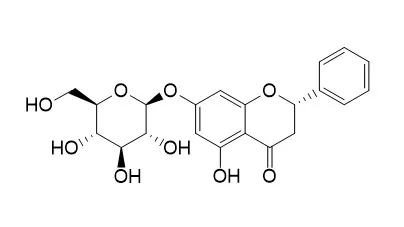| Structure Identification: |
| Molecules . 2018 Jun 26;23(7):1541. | | Phytochemical Composition of the Decoctions of Greek Edible Greens (Chórta) and Evaluation of Antioxidant and Cytotoxic Properties[Pubmed: 29949914] | | Wild or semi-wild edible greens (chórta) are an integral part of the traditional Greek Mediterranean diet due to their nutritional value, containing various phytonutrients beneficial to human health. Water-based decoctions of chórta are widely consumed in Greek alternative medicine as health promoting agents. This study examined the chemical profile of the decoctions of eight edible plants, Cichorium intybus, C. endivia, C. spinosum, Crepis sancta, Sonchus asper, Carthamus lanatus, Centaurea raphanina, and Amaranthus blitum, by UPLC-ESI-HRMS and HRMS/MS analysis, to determine possibly bioactive constituents. The profiles of the plants from the Asteraceae family are dominated by the presence of phenolic acids and flavonoid derivatives, whereas the A. blitum decoction is rich in triterpene saponins. Interestingly, the Centaurea raphanina decoction was found to be extremely rich in flavanones, particularly in the aglycone pinocembrin. Further phytochemical investigation and fractionation of this extract resulted in the isolation and identification of five compounds: phlorin (1), syringin (2), pinocembrin (3), Pinocembroside (4), and pinocembrin-7-O-neohesperidoside (5). The extracts were also tested for their antioxidant and differential cytotoxic activity against tumor cells. C. raphanina was found to be differentially toxic against metastatic tumor cells. In conclusion, we found that Greek edible greens are a rich source of bioactive secondary metabolites and their consumption could contribute to the maintenance of overall health. | | Molecules . 2022 Mar 21;27(6):2005. | | Flavanone Glycosides, Triterpenes, Volatile Compounds and Antimicrobial Activity of Miconia minutiflora (Bonpl.) DC. ( Melastomataceae)[Pubmed: 35335366] | | Chemical composition of the essential oils and extracts and the antimicrobial activity of Miconia minutiflora were investigated. The flavanone glycosides, Pinocembroside and pinocembrin-7-O-[4″,6″-HHDP]-β-D-glucose, were identified, along with other compounds that belong mainly to the triterpene class, besides the phenolics, gallic acid and methyl gallate. Sesquiterpenes and monoterpenes were the major compounds identified from the essential oils. Screening for antimicrobial activity from the methanolic extract of the leaves showed that the MIC and MMC values against the tested microorganisms ranged from 0.625 to 5 mg·mL-1 and that the extract was active against microorganisms, Staphyloccocus aureus, Escherichia coli, and Bacillus cereus. |
|






 Cell. 2018 Jan 11;172(1-2):249-261.e12. doi: 10.1016/j.cell.2017.12.019.IF=36.216(2019)
Cell. 2018 Jan 11;172(1-2):249-261.e12. doi: 10.1016/j.cell.2017.12.019.IF=36.216(2019) Cell Metab. 2020 Mar 3;31(3):534-548.e5. doi: 10.1016/j.cmet.2020.01.002.IF=22.415(2019)
Cell Metab. 2020 Mar 3;31(3):534-548.e5. doi: 10.1016/j.cmet.2020.01.002.IF=22.415(2019) Mol Cell. 2017 Nov 16;68(4):673-685.e6. doi: 10.1016/j.molcel.2017.10.022.IF=14.548(2019)
Mol Cell. 2017 Nov 16;68(4):673-685.e6. doi: 10.1016/j.molcel.2017.10.022.IF=14.548(2019)